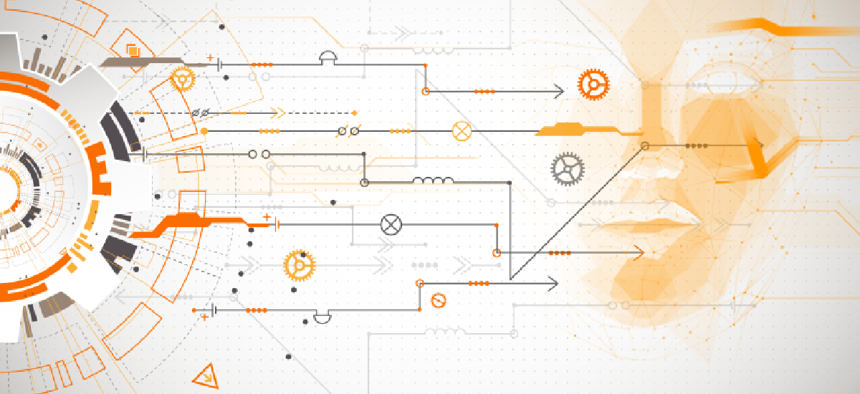RPA gains traction, paving the way for agency AI

Robotic process automation is setting the stage for artificial-intelligence-based processes that could drive profound changes in how agencies work.
As it approaches the one-year anniversary of its aggressive effort to inject RPAs into agency processes, the General Services Administration has over a dozen RPA projects in operation that eliminate low-value, repetitive manual work, said Edward Burrows, the agency's RPA program manager. They are also setting the stage for artificial intelligence applications.
The bots send email payroll reports, make interagency billing chargebacks and handle other recurring tasks at GSA, Burrows said. A bot named Truman helps new vendors work through GSA's detailed review process, he added. The agency wants two dozen more RPAs by the end of the fiscal year, Burrows said at the Association of Government Accountants' Feb. 28 National Leadership Training meeting in Washington, D.C.
RPAs make repetitive, sometimes-tedious processes such as data entry faster, more efficient and accurate, according to those using them. This can impact costs and workforce in many ways.
Teresa Hunter, deputy director of the Office of Financial Management at the Department of the Interior, is working with a contractor on a bot that closes out contracts for department contracting officers by tracking the final account reconciliation. The bot was developed over the last year and is in pilot now.
Mike Wetklow, the National Science Foundation's deputy chief financial officer and Financial Management Division director, said he has three bots that help his relatively small workforce with repetitive tasks.
"It's entry-level AI," he said.
RPAs, said the managers, are the first wave of automation, paving the way for AI-based federal processes that could drive profound changes in how agencies work.
NSF is working to build out governance processes for RPAs for other portions of its operations. Human resources and procurement operations, he said, have inquired about injecting RPAs into their processes. NSF is also working with GSA to develop AI and blockchain bots to help track grant payments.
Burrows, Hunter and Wetklow all said there was considerable homework still to be done before the more-advanced automations were implemented.
The Interior Department winnowed down a list of 80 candidates for RPAs to one over a year, according to Hunter, as it looked for stable, repetitive processes where it could step in.
GSA has been working on an aggressive schedule since last year, Burrows said. The agency has identified priority areas, established a platform, worked out security approvals, as well as groundbreaking work on how to provide an RPA with an official authority to operate.
Identifying which processes are good candidates for automation, said Burrows, can take some effort. "Not all manual processes are good candidates," he noted.
Processes that are rule-based, frequent and repetitive are most amenable, he said. Data entry and data manipulation are fertile ground.
But RPAs also can be the entry point for larger AI projects, allowing agencies to take shorter steps, said Burrows, who added that he's talking with commercial companies who are producing dozens of robots a month and integrating them into their systems.
This article was first posted to FCW, a sibling site to GCN.
NEXT STORY: Deploying AI to protect power grids





